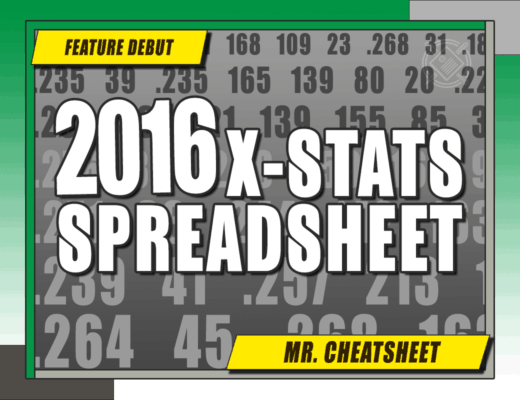This three-part series is designed to take an objective look at the data that we get from average draft position (ADP) reports, as the introductory post explains. Fantasy baseball draft research is only as good as the data that exists and the current system for generating ADP data from sites like MockDraftCentral is broken and in need of a new direction.
As a mock draft participant, you are presented with a ranked list of players when you enter a draft room. It does help put the available players in a manageable order for the participant but it automatically creates a bias that forces them to act in accordance with the rankings. If we want to reduce bias in mock drafts, rankings simply should not be presented to mock drafters.
The ideal mock draft site would give the mock drafters as much information as they want without it being initially sorted in any biased way. A simple solution would be to have the players ranked alphabetically and allow the mock drafters to sort through previous year stats and current year projections as they please. This would allow the participants to make an educated decision on who to draft and without influence and this would create a system that would give us a true idea of where players are being drafted on average.
The one hiccup with such a system is that the true ADP that will result from it will not match up with our eventual draft results because most fantasy baseball sites also present rankings in their draft rooms that influence the live drafters. But, regardless, we would be presented with data that would give a true public perception on the feelings towards a specific players, which we can then use to apply to our eventual drafts in their biased format. By comparing a true ADP for a player versus the draft room’s rankings, we can get an idea whether people will reach for him or not and how we should act if we want to get him.
While the perfect system does not exist now and may never exist, there are better things we can do with this current ADP data than we’re doing now. One solution involves looking at an average of the three main ADP sites (CBS, ESPN, MDC) in order to get a better idea of true ADP position. In addition to that, analyzing a player’s difference between ADP and site ranking would provide another tool to determine if the public is disagreeing with the site ranking and drafting the player differently. The data is unavailable to the public but standard deviation of draft position in addition to average draft position would go a long way for statistical analysis of the public perception as well.
Over the course of this preseason, I will continue to reference ADP data when determining a player’s value as it’s still the best we got. However, I will try to roll out some features in my cheatsheets such as those mentioned in the paragraph above that will help alleviate some of the problems associated with ADP. We may not have a perfect system or even an adequate system but at least we do have some tools at our disposal which will still help us get a leg up on our competition. And, finally, remember that your new ability to recognize this broken system will also help us you be a step above those who swear by the ridiculous system of ADP results.



